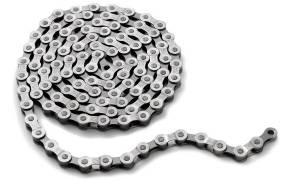Table of Contents
Chainloading iPXE
If you have a large number of machines which already have a PXE implementation (such as network cards with an existing Intel PXE ROM), then you may want to avoid having to reflash each machine's network card individually. You can achieve this by using chainloading.
To enable chainloading, you need to place a copy of iPXE on your TFTP server. Your machines will download this copy of iPXE from the TFTP server each time that they boot.
Setting up PXE chainloading
Download http://boot.ipxe.org/undionly.kpxe and save it to your TFTP server directory.
Configure your DHCP server to hand out undionly.kpxe as the boot file. If you are using ISC dhcpd then you need to edit /etc/dhcpd.conf to contain
next-server X.X.X.X; filename "undionly.kpxe";
where X.X.X.X is the IP address of your TFTP server.
At this point, you should be able to boot one of your PXE-capable machines, and see it download iPXE from the TFTP server. If everything has worked, then you should see the iPXE startup banner appear:
iPXE -- Open Source Boot Firmware -- http://ipxe.org
Breaking the infinite loop
When the chainloaded iPXE starts up, it will issue a fresh DHCP request and boot whatever the DHCP server hands out. The DHCP server is currently set up to hand out the iPXE image, which means that you will be stuck in an infinite loop: PXE will load iPXE which will load iPXE which will load iPXE which will load iPXE…
Breaking the loop with the DHCP server
One way that you can break this infinite loop is to configure the DHCP server to hand out iPXE only for the first DHCP request; the second DHCP request will return the “real” boot filename.
Breaking the loop with an embedded script
Another way to break the infinite loop is to build iPXE with an embedded script that directs iPXE to boot from a fixed URL. For example, if you create the script file demo.ipxe containing:
#!ipxe dhcp chain http://boot.ipxe.org/demo/boot.php
and then build your own version of iPXE with this script embedded:
make bin/undionly.kpxe EMBED=demo.ipxe
then the chainloaded iPXE will always boot from http://boot.ipxe.org/demo/boot.php regardless of the DHCP server configuration.
UEFI
If you have machines which attempt to perform a UEFI network boot, then download http://boot.ipxe.org/ipxe.efi and save it to your TFTP server directory.
You will need to configure your DHCP server to hand out undionly.kpxe as the boot file to BIOS machines and ipxe.efi as the boot file to UEFI machines. If you are using ISC dhcpd then edit /etc/dhcpd.conf to contain
option client-arch code 93 = unsigned integer 16;
if option client-arch != 00:00 {
filename "ipxe.efi";
} else {
filename "undionly.kpxe";
}
next-server X.X.X.X;
where X.X.X.X is the IP address of your TFTP server.
Note that UEFI network booting tends to be substantially slower than BIOS network booting, due to fundamental architectural limitations in UEFI. Most UEFI systems provide the ability to perform a network boot in a BIOS compatibility mode. You may wish to upgrade your system to use BIOS mode for network booting.


